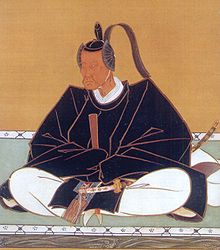Hosokawa Shigekata
| Hosokawa Shigekata | |
|---|---|

Hosokawa Shigekata, mid-Edo era daimyo of the Kumamoto domain
|
|
|
In office 1747–1785 |
|
| Preceded by | Hosokawa Munetaka |
| Succeeded by | Hosokawa Harutoshi |
| Personal details | |
| Born |
January 23, 1721 Edo, Japan |
| Died | November 27, 1785 Edo, Japan |
| Nationality | Japanese |
| Spouse(s) | daughter of Koga Michie |
Hosokawa Shigekata (細川 重賢?, January 23, 1721 – November 27, 1785) was a Japanese samurai daimyo of the Edo period.
His father, Hosokawa Nobunori, was the 4th daimyo of Hosokawa clan, but his elder brother, the 5th daimyo, unfortunately was killed, because the family crest of another person was similar to that of the Hosokawa clan.
He was the 6th lord of Kumamoto of Hosokawa clan, noted for successful financial reform of Kumamoto Domain, for establishing Jishuukan Han school, Medical School Saishunkan (school) and new ideas of criminal law.
There were financial difficulties of the Kumamoto Han. The deficits at the time of his father's administration reached 400,000 Ryō. The financial situation of his Han worsened because of the Edo bakufu Sankin kōtai policy, and because of famine. Shigekata himself had kept a card of a pawn shop in order not to forget his young hard days, for one reason because he was one of 21 children born to Hosokawa Nobunori.
In 1752, he appointed Hori Katuna the great Bugyō, often translated as "commissioner" or "magistrate" or "governor," was a title assigned to government officers in pre-modern Japan. Hori immediately went to Osaka to negotiate with Kohnoike family and others for loan, but the wealthy families of Osaka refused the requests of Kumamoto han. Then, Hori was successful in borrowing a huge sum of money from Kajimaya in return for 100,000 koku of rice. Kajimaya requested considerable reduced financial interest from Kumamoto han.
...
Wikipedia
